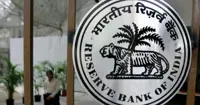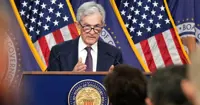China’s foreign assets jump to $2.92 trillion in 2008
20 May 2009
China's foreign financial assets rose 23 per cent in 2008 to reach a total of $2.92 trillion.
China's foreign exchange regulator, State Administration of Foreign Exchange (SAFE), disclosed yesterday that, of the total amount, China had nearly $2 trillion in foreign exchange and gold reserves accounting for 67 per cent of its overseas assets.
The remaining $900 billion were foreign assets, including direct investments and equity stakes, held by Chinese private firms, state-owned banks and companies as well as other non-state investors.
The regulator said that the country's outbound direct investment of $169.4 billion, accounted for 6 per cent of the total foreign financial assets while share investments totaled $251.9 billion.
SAFE has also issued draft rules this Monday allowing domestic financial institutions to buy foreign exchange or use foreign currency assets and loans to invest overseas and also reinvest profits from their overseas investments.
The rules will enable companies to boost outbound direct investment and will be eased to expand the sources of capital available and ease approval procedures for companies to invest abroad.
SAFE said it would also standardise the procedure for companies to seek approval for foreign investments, instead on a case-to-case basis. But it pointed out that any significant foreign investment would still need approval from other authorities.
"This is aimed at implementing the 'going out' development strategy as well as for promoting and facilitating overseas direct investment by domestic institutions," SAFE said on its website.
The government controls trade in the Chinese yuan and has pegged its value for the past year to 6.83 to the US dollar, while pledging to continue loosening currency restrictions.
This move is to encourage companies to invest abroad and partly to help reduce the upward pressure on China's currency.
China's export-driven economy results in an influx of foreign money into the country, forcing China's central bank to buy up billions of dollars every month to maintain a steady yuan.
The government's strategy is also to diversify the country's foreign assets outside the dollar-denominated investments.
China's outbound foreign direct investment nearly doubled from $26.5 billion in 2007 to $52.2 billion in 2008. For the outbound investments to increase more than the inbound FDI, would mean an $80 billion outbound foreign direct investment this year, according to some analyst.
"Chinese companies who plan to use renminbi to invest abroad should, however, follow the relevant rules," SAFE said that for the first time the renminbi could be used as a settlement currency by Chinese companies wanting to invest overseas directly.
According to experts China for the first time has talked about renminbi-denominated overseas investments indicating an international platform being created for its currency.
China with an increasing foreign exchange reserves had announced in December, the first step towards making the yuan, an international currency, by allowing it to be used as a mode of payment in business deals with some neighboring countries. The move would also curb the effect of the volatility of the dollar on trade settlements. (See: China moves to make yuan global currency)
The US has been for long stating that China has artificially depressed the value of its currency to boost exports which is detrimental to business in the US. China is the largest foreign holder of US Treasuries after Japan. (See: China sees economy recovering; makes multiple protective forex plans)




.webp)


























